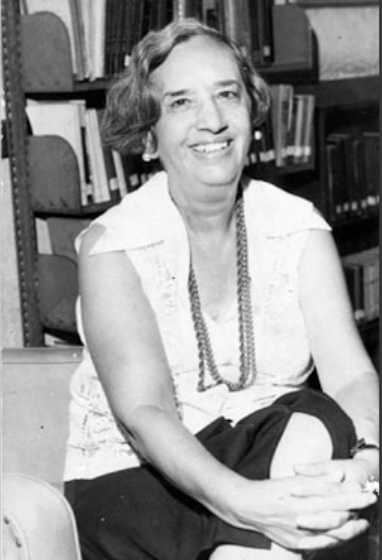4.1.2.12.2 The poetic work of Cleva Solís (1926 – 1997) after the triumph of the Revolution in 1959

Cleva Solís’s poetic work during this period is reflected in the three poetry notebooks she published: “A nadie espera el tiempo” and “Las mágicas distancias” (Time Waits for Nobody) from 1961, and “Los sabios días” (The Wise Days) from 1984, through which she refined her poetic instrument to reach new expressive densities, an amalgam of topics flourishing in our tradition and also ecumenical discoveries.
The first two collections of poems, while not entirely abandoning the Origenist pursuits under which Cleva was born as a poet, are embedded in a complex network of conceptual chiaroscuros and what purports to be eloquent simplicity, the latter akin to the linguistic register of Samuel Feijóo. The esoteric, however, is expressed with unusual force in her poetry, open to symbols emanating from diverse traditions and cultures.
In these 1961 collections of poems, even from their titles, a complex spatial-temporal framework is evident, with some coordinates in our reality but an understanding more inclined toward abstractions. However, Solís often expresses her entire universe in language that echoes the prevailing colloquialism of the period, without diluting her emphatic revolutionary spirit.
In “The Wise Days,” the poet fully embraces the current of conversationalism, in expressive forms that fluctuate from free verse to the even freer poetic prose. However, in terms of content, her poetics differed greatly from that of her generation, through a cultural foundation for the tropological that was not anchored in her circumstances but rather in a more referential sphere.
This final notebook includes the poem “El Jazz,” dedicated to the sisters Bella and Fina García Marruz, perhaps as a testament to the long-standing ties that have bound them to “Orígenes.” Their foray into the world of jazz, with a transcendent desire that goes beyond the factual, signified a form of cultural connection whose fabric begins in the vernacular, evident in other pieces by Cleva. The final verses are reproduced:
“Bessie suddenly says something about Charles:
“He had just finished playing Smoke in your
eyes”
I was singing it and he said to me:
“Your smoke still surrounds me,
still surrounds me.”
I didn’t answer him anything and continued.
Then he leaned back on a table and looked at me.
Thoughtful, smoking.
I learned later that he threw himself under a truck.
What do they want?
He knew Rappolo had arrived here
days ago. And he saw me with him again and again.
But now the audience was coming in, it was time to play.
Tap?
That night the antiphonal bell
and sententious of the saxophone,
would no longer have its true glory.
There was a wreath of black geraniums
in the Charles Armiess orchestra”
Cleva Solís’s work deserves in-depth study for its contribution to the national lyrical tradition and also from the perspective of female creation, of which she was undoubtedly one of the most liberated exponents. The Origenist beat, Feijosian simplicity, the esoteric, and “jazz”—as a symbol of a probing intellection beyond the insular—come together, but in a holistic sense, as this author rises above currents and trends to showcase the lyricism of her own face.








